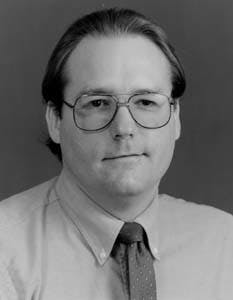Study Advances ViewOf Geopressure Seals
William M. Benzing, G. Michael Shook
Idaho National Engineering Laboratory
Idaho Falls, Idaho
The last decade has seen a growing interest in the subject of fluid pressure seals and fluid flow in hydrocarbon-bearing basins. As explorationists begin to view basins in terms of coupled, dynamic, chemical, and physical processes, seemingly unrelated observations become interrelated.
It is precisely the integration of geological, geochemical, and geophysical observations that opens the door for new exploration opportunities. This article lays a conceptual foundation in the area of geopressure seals and on the role of geopressure in hydrocarbon migration and accumulation in young, clastic basins.
The exploration significance of geopressure can be appreciated when one considers that within the Gulf Coast basin, geopressured fields, which represent only 10% of the total number of fields, account for approximately 50% of the cumulative production.12
Leaky seals
Discrete pressure seals displaying abnormally high pressure gradients3 in combination with active fluid flow4 suggest the possibility that pressure seals leak fluid. These pressure seals do not conform to bedding planes, but rather follow isotherms.5
We hypothesize that these pressure seals form in the presence of interstitial gas. In fine-grained sediments, these relative permeability seals can substantially reduce the permeability to water6 and are more likely to follow isotherms than bedding planes in response to the effect of temperature on gas solubility.
Laboratory and numerical modeling show that geopressure seals can be generated within a uniform, fine-grained sediment. Leaky pressure seals offer a plausible explanation for the observed association of commercial hydrocarbon reservoirs with pressure transition zones in young, clastic basins.17
We propose that seals are generated as dissolved gas is transported from depth and subsequently exsolved into the pore spaces of shallower sediments. The presence of pore gas restricts the flow of water through the sediment, creating a relative-permeability or "vapor-lock" fluid pressure seal. Through numerical modeling, the seal geometry is shown to be closely related to the temperature distribution within the sediment.
Laboratory experiments
Gaseous relative-permeability pressure seals were created in the laboratory with the apparatus shown schematically in Fig. 1 [32317 bytes]. Using yeast as a source of carbon dioxide, this apparatus demonstrates how gas dissolution, transport, and exsolution can generate an overpressured zone within a uniform, fine-grained sediment.
During and after seal formation, the fluid pressure distribution within the sediment column is easily calculated via the water level profile displayed in the manometer tubes. With the water levels shown, an equivalent depth- pressure profile was calculated.
The discrete seal zone, created by gas exsolution within the sediment, is defined by its abnormally high fluid pressure gradient of 12-32 kilopascals (kPa)/m (0.55 psi/ft). Although this gradient is not high for compacted sediments, it is nevertheless impressive for a soft, unconsolidated sediment with an overburden pressure of only slightly more than 1 atm.
Electrical resistivity measurements and visual observations confirm the presence of interstitial carbon dioxide within the seal. Although fluid flow within the tube is substantially reduced after seal formation, it is measureable.
Thus, relative-permeability pressure seals in unconsolidated sediments can be interpreted as zones of reduced permeability to water in the presence of free gas. The pressure drop across the seal provides a means for continuous gas exsolution within the seal as saturated fluid moves across the seal from high to low pressure.
This possible reservoir charging mechanism of exsolution was observed during the laboratory experimentation, in which carbon dioxide was continually expelled from the seal zone and into the adjacent manometer tubes.
Formation of gaseous relative-permeability seals in the laboratory suggests a mechanism for seal formation in young geopressured basins.8 Although carbon dioxide was used in the laboratory simulation, it is likely that if such seals exist in young hydrocarbon basins, the vapor phase would be methane-rich. In order to test the possibility that methane-rich "vapor-lock" seals could form in young geopressured basins, numerical modeling was conducted.
Computer simulation
The important assumptions used in the numerical study are listed below, and a schematic of the conceptual model is shown in Fig. 2 [26469 bytes].
- Spatially variable heat flux. Various authors have published data on heat flow in the Gulf of Mexico. In the study of Eugene Island Block 330 field, Anderson et al.9 reported surface heat flux measurements ranging from 20 to 135 milliwatts (mW)/sq m. Values for heat flux used in the numerical model range from 149 mW/sq m as a maximum value in the middle of the domain, to 50 mW/sq m on either side.
- Constant fluid flux from below. This assumption is based on recent laboratory experiments conducted at the University of Tulsa by Benzing.10 These experiments demonstrated that, irrespective of the pressure differential across the "vapor-lock" seal, the fluid flux moving across the seal was constant. In the numerical model, estimates of flow rates were determined from steady-state simulations of flow in the absence of gas exsolution and therefore describe buoyancy-driven flow arising from differential heating. Values for vertical fluid flux are on the order of 10-6 m/day. As with the heat flux, the fluid flux is constant with time but varies laterally.
- Methane-saturated aqueous phase rising from deep source beds. This assumption is crucial to the conceptual model of geopressure formation and is justified on the basis of source rock kerogens being thermally cracked and saturating nearby water with methane. Since methane-saturated water is less dense than pure water, this enhances the buoyancy effects, thereby increasing vertical fluid flow. Consistent with buoyancy-driven flow, mass flux of both water and dissolved gas is largest in the center of the model, where the heat flux is largest.
- Minima in gas solubility. With pure methane as the gas, there exists a minimum in the solubility of gas in water at 72 °C.11 It is this piece of data that best supports the concept of a "vapor-lock" seal within young, geopressured basins. The aqueous solubility of pure methane is shown in Fig. 3a [59056 bytes].
Consider methane-rich waters moving upward in response to buoyancy and, in the process, decompressing and cooling. At some point, based upon the solubility minimum at 72 °C., the water becomes oversaturated with respect to methane, and gas exsolves from solution. This reduces the relative permeability to water and creates a pressure seal that may exhibit an abnormally high fluid-pressure gradient.
An equation-of-state model for gas solubility developed for geothermal systems12 was used to study aqueous solubility of multi-component gases. Fig. 3b [59056 bytes] shows gas solubility for a combination of 75% methane and 25% carbon dioxide in fresh water. Gas solubility in brine shows a similar shape. The presence of 25% carbon dioxide produces a gas solubility curve with two minima, at 72 °C. and 130 °C. , which are independent of pressure. At a typical temperature gradient of 0.027 °C./m (1.5 °F./100 ft), these solubility minima would occur at 2,300 m (7,500 ft) and 4,080 m (13,400 ft).
These depths agree reasonably well with the onset of geopressure based upon pressure seal observations in the Gulf of Mexico basin.1314
Identification of gas-solubility minima was a crucial part in determining whether or not "vapor-lock" seals can exist on a basin scale. However, numerical problems with the gas solubility were also identified. Because the minima are very flat, resolving the minima is numerically challenging.
In order to continue our study of seals, only the l00% methane (single minimum) solubility data have been used. In addition, the gas solubility was treated as linear and increasing on either side of the minimum, with the slope of solubility vs. temperature slightly larger than is observed experimentally. In terms of feasibility testing, these simplifications should not invalidate the model.
- Low permeability, uniform sediment. Consistent with the idea that young clastic basins are primarily composed of siltstones and shale, the numerical model was tested with a uniform, low permeability, porous medium. Permeability used in the model was 0.5 µd.
Results
A numerical model, TETRAD,15 was used in this study, and was set up and run for a simulated time of 750,000 years. In the simulation, the temperature field reached a steady-state condition after 50,000 years (Fig. 4 [33548 bytes]).
It is interesting to note that, despite a 3:1 ratio in heating at the base of the model, relatively little horizontal variability is observed as little as 100 m (328 ft) above the base. Temperature gradients at a depth of 2,233 m (7,326 ft) are approximately 1.5 °F./100 ft across the entire domain. Gas saturations in the model are shown in Fig. 5 [27242 bytes]. As might be expected, gas saturations are largest in the middle of the domain, where the largest mass flux of dissolved methane occurs.
A pressure profile at 750,000 years is shown in Fig. 6 [59101 bytes ]. Notice that within the zone of gas exsolution, a large gas saturation correlates well with a large pressure gradient. This result is consistent with the concepts of relative permeability and fluid flow.
The pressure/depth plots for the hypothetical wells shown in Fig. 6 [59101 bytes ] are plotted in Fig. 7 [52693 bytes ]. For the vertical well, the seal is readily identified by its abnormally high pressure gradient of 39.6 kPa/m (1.75 psi/ft). The pressure/depth plot for the deviated well appears different. Since the well parallels a fluid pressure isobar, pressure remains more or less constant, even with increased depth.
Seals can exist
Based on laboratory and numerical model studies, gaseous relative-permeability fluid-pressure seals can exist in young geopressured basins. Gas solubility data indicate that one and possibly two seals of this type can exist in a uniform subsurface.
The structural relief on the seals is determined by the relief on specific isotherms where gas solubility minima occur. Within the seals, exsolved gas is present, which reduces the relative permeability to water and increases the pressure gradient above hydrostatic.
Since the seal leaks water, continued gas exsolution occurs as a result of decompression and cooling. This process should be capable of charging sandstone reservoirs that physically contact the pressure seal.
Acknowledgments
This work was supported by the Department of Energy's Advanced Computational Technology Initiative and the Idaho National Engineering Laboratory (INEL) LDRD Program. The authors would like to thank those responsible for this support.
The authors also acknowledge the University of California, San Diego Chemical Geology Group, for help with their equation of state models, and the University of Tulsa for providing laboratory space. All numerical models used in this study were made available through support from the DOE and INEL Geothermal Reservoir Technology Program. Finally, the authors would like to thank the reviewers for their comments.
References
1. Leach, W. G., "New Exploration Enhancements in S. Louisiana Tertiary Sediments," OGJ, Mar. 1, 1993, pp. 83-87.
2. Timko, D.J., Fertl, W.H., "Relationship Between Hydrocarbon Accumulation and Geopressure and Its Economic Significance," Journal of Petroleum Technology, August 1971, pp. 923-930.
3. Hunt, J.M., "Generation and Migration of Petroleum From Abnormally Pressured Fluid Compartments," AAPG Bull., Vol. 74, 1990, pp. 1-12.
4. Anderson, R.N., Cathles, L.M., Nelson, H.R., "Data Cube Depicting Fluid Flow History in Gulf Coast Sediments," OGJ, Nov. 4, 1991, pp. 60-65.
5. Powley, D. E., Pressures, Normal and Abnormal: AAPG Advanced Exploration School, unpublished lecture notes, 48 pages, 1986.
6. Hedberg, H.D., "Relation of Methane Generation to Undercompacted Shales, Shale Diapirs and Mud Volcanoes," AAPG Bull., Vol. 58, 1974, pp. 661-673.
7. Fertl, W.H., "What to Remember When Interpreting Mud Gas Cutting," World Oil, September 1973, pp. 68-72.
8. Benzing, W.M., "The 'Vapor-Lock' Pressure Seal-A Nonconformable Seal Creating Potential Buoyant Forces Within Young, Clastic Basins," poster abstract, AAPG Hedberg Conference, Abnormal Pressures in Hydrocarbon Environments, Denver, Colo., June 8-10, 1994.
9. Anderson, R.N., Wei He, Hobart, M.A., Wilkinson, C.R., Nelson, H.R., "Active Fluid Flow in the Eugene Island Area, Offshore Louisiana," Geophysics: Leading Edge of Exploration, April 1991, pp 12-17.
l0. Benzing, W.M., "Laboratory Experiments on the Behavior of Leaky Pressure Seals," INEL Subcontract Report, C95-175524, 1966.
11. Culberson, O.L., McKetta Jr., J.J., "Phase Equilibria in Hydrocarbon-Water Systems III-The Solubility of Methane in Water at pressures to 10,000 PSI," Trans. AIME, 1957, pp. 223-226.
12. Duan, Z.H., Moller, N., Weare, J.H., "An Equation of State for the CH4-C02-H2O System: II. Mixtures From 50 to 1000 °C and 0 to 1000 Bar," Geochimica et Chomochimica Acta, Vol. 56, 1992, pp. 2619-2631.
13. Bradley, J.S., Powley, D.E., "Pressure Compartments in Sedimentary Basins: A Review," AAPG Mem. No. 61, 1994, pp. 3-26.
14. Leftwich Jr., J.T., Engelder, T., "The Characteristics of Geopressure Profiles in the Gulf of Mexico Basin," AAPG Mem. No. 61, 1994, pp. 119-130.
15. Vinsome, P.K.W., Shook, G.M., "Multi-Purpose Simulation," Journal of Petroleum Science and Engineering, Vol. 9, 1993, pp. 29-38.
The Authors
William M. Benzing is a consulting scientist at the Idaho National Engineering Laboratory (INEL), working in the Integrated Earth Sciences Group. Before joining INEL in 1995, he spent 20 years with Conoco Inc. as a research and exploration geophysicist.He holds a PhD in geophysics from University of Chicago and a BS from the University of Hawaii.
G. Michael Shook is an advisory scientist in the Integrated Earth Sciences Group at INEL. He holds a BS and MS from University of Texas and has been at INEL since 1990.Shook's research interests include geothermal and geopressured reservoir engineering and applications of enhanced recovery technology to the field of environmental restoration.
Copyright 1996 Oil & Gas Journal. All Rights Reserved.


